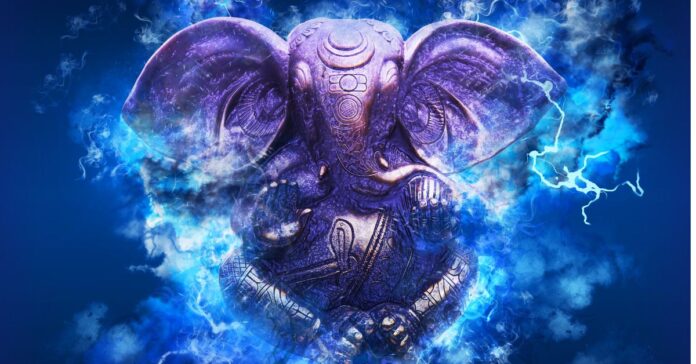Hinduism is a rich and diverse culture that encompasses a vast array of beliefs, practices, and symbols. Among these symbols, the Swastika and Om hold a special place. These ancient symbols are not only integral to Hinduism but also have significance in Buddhism and Jainism. In this blog, we will delve into the profound meanings and cultural significance of the Swastika and Om.
The Swastika: A Symbol of Good Fortune
The Swastika is a well-known symbol with an intricate history and a range of interpretations. In Hinduism, Buddhism, and Jainism, it is a symbol of good fortune and well-being. The word “Swastika” is derived from the Sanskrit word “svastika,” which means “that which is associated with well-being.”
- Good Fortune and Well-Being: The Swastika is often associated with the idea of auspiciousness, and its four arms represent the four cardinal directions, symbolizing the omnipresence of good fortune.
- The Sun God Surya: In Hinduism, the Swastika is closely linked to the sun god Surya, who is considered the source of life and energy. This connection reinforces the symbol’s association with vitality and prosperity.
- The Four Vedas: The Swastika also represents the four Vedas, the sacred scriptures of Hinduism. These texts are the foundation of knowledge and wisdom in Hinduism, making the Swastika a symbol of spiritual knowledge and enlightenment.
- Lord Ganesha: Lord Ganesha, the elephant-headed deity known as the remover of obstacles, is often depicted with a Swastika on his palm or forehead. This connection signifies the Swastika’s power to overcome obstacles and ensure success.
Om: The Sacred Sound of the Universe
Om, often written as “Aum,” is another iconic symbol in Hinduism that carries profound spiritual significance. It is considered the primal sound of the universe and encompasses various layers of meaning.
- The Soul, Universe, and Truth: Om represents the essence of the soul, the universe, and the ultimate truth. It encapsulates the divine and the eternal.
- The Brahman: In Hindu philosophy, Om symbolizes the Brahman, the ultimate reality from which the entire universe emanates. It signifies the interconnectedness of all existence.
- Yoga and Chanting: In the practice of yoga, the chanting of Om at the beginning of a class is a common tradition. This sacred sound helps practitioners transition into a state of mindfulness and spiritual focus, setting the tone for their practice.
Swastika and Om: The Essence of Hindu Spirituality
Both the Swastika and Om are essential symbols of Hindu spirituality, and together, they represent profound aspects of Hindu belief and philosophy.
- Auspiciousness, Peace, and Prosperity: The Swastika and Om collectively stand for auspiciousness, peace, and prosperity. They are often displayed in homes, temples, and during religious ceremonies to invite blessings and well-being.
- World Brotherhood: These symbols transcend cultural boundaries and promote a sense of unity and brotherhood. In their essence, they emphasize the interconnectedness of all beings and the universal pursuit of truth and goodness.
- Tri Shakti Symbol: The combination of Swastika and Om is also known as the Tri Shakti Symbol. It represents the three main deities of Hinduism: Brahma (the creator), Vishnu (the preserver), and Shiva (the destroyer). This further illustrates the comprehensive nature of these symbols.
Conclusion
The Swastika and Om are not merely symbols; they are profound expressions of Hindu spirituality and philosophy. They encapsulate the concepts of good fortune, well-being, truth, and the ultimate reality. These symbols are a reminder of the interconnectedness of all life and the universal quest for knowledge and enlightenment. In a world rich with diverse beliefs and symbols, the Swastika and Om serve as timeless reminders of the depth and beauty of Hindu culture.








